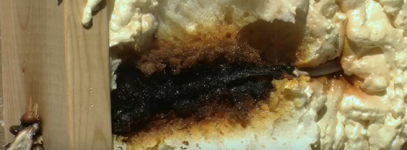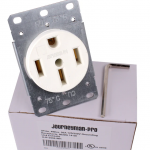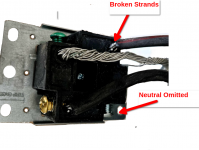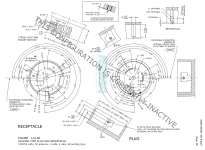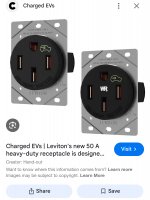Say you have two EV chargers and two identical EV's. If I have 100' of #8 NM cable going across a attic on then down to one EV charger and also a run of 3/4 EMT with #8 THHN right next to the NM for the other one why then is the NM cable limited to 40 amps and the THHN in conduit have a ampacity of 50? I am no engineer but I'd imagine the THHN in conduit can dissipate more heat than wires in a NM cable.It's a regulatory difference, not a physics difference. So for identical installs with #8 Cu on a 50A breaker and a 75C rated receptacle, one THWN-2 and one NM, while the latter install is an NEC violation, it's no more likely to burn up at the receptacle in the manner under discussion.
Now if the receptacle is marked for 60C terminations only, that means that the thermal design was relying there being a #6 Cu conductor, so using #8 certainly could contribute to the problems depicted.
Cheers, Wayne
Before LED lighting i'd see the same thing with incandescent lighting, you'd open up a heavily used light fixture and the conductors from NM cable would crumble to dust where actual THHN would not.
I'd be surprised to learn the plastic insulation used in NM cable is the same quality as THHN.


